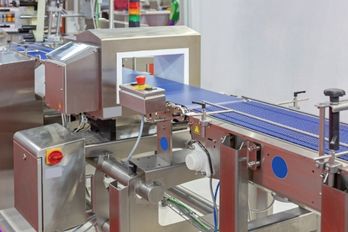
There are many benefits to product inspection and contamination detection, such as reducing end-line defects, maintaining high product quality, and saving time. But how do manufacturers perform product inspection and contamination detection? Let’s find out.
When it comes to industrial manufacturing and production, there is an emphasis on creating a problem and error-and contaminant-free product. To this, product inspections and contaminants detection take place. The product must undergo inspection at the assembly’s beginning or end to reduce defects and monitor quality.
1.How Are Products Inspected?
Product inspection allows for product quality verification throughout various stages in the production process and before dispatching. A metal detector provides an essential role in an inspection. It has multiple applications in food processing, pharmaceutical and cosmetic manufacturing, and garment production. Objects get fed into metal detectors in three ways: normal conditions, Fe magnetic metal detection, and non-magnetic detection. Products get fed along the conveyer belt under the sending and receiving coils to find foreign objects and contaminants.
Through inspection, products must meet specific requirements to adhere to international standards for the industry you’re part of. Moreover, product inspection ensures high quality through every stage, avoids product recalls and negative reputational impact, optimizes quality control budgets, and verifies the quality at the source to prevent customers from paying for defective goods.
2.How Are Contaminants Detected?
How do production inspection and contamination detection go together? As products are inspected, metal detectors will check for physical contaminants.
Metal detectors provide product quality control, production process control, support product liability law, and HACCP compatibility. They’re essential in various professional fields, such as food processing lines, pharmaceutical and cosmetic manufacturing facilities, and garment production lines. Metal contaminants also range from easy to difficult in detectability, from steel and nickel to lead and stainless steel, respectively. Moreover, needle and cylindrical-shaped contaminants have different detection sensitivities depending on flow orientation.
3.How To Prevent Inspection Mistakes
There are many reasons why contamination can get past detection. It can result from improper system calibration, unmonitored machines, and production line speeds not allowing for small particle detection. Additionally, detectors can become deceived by high salt contents, moisture, and dense products that interfere with signals. Thankfully, there are a few quality control basics that can prevent detection errors.
Ensure that your metal detector is managed correctly by not allowing inappropriate items to become placed near or on the equipment; install the metal detector and rejector correctly so up and downstream conveyors are not touching them. Moreover, clean the metal detector conveyor thoroughly daily and adjust the belt position to avoid fraying and mistracking. Lastly, practice good security to prevent the mixing of uncontaminated and contaminated products.
Product inspection and detection are mandatory parts of the industrial manufacturing and production process. At Factronics USA, we strive to provide high-quality technological solutions for most manufactured products. Our metal detectors accurately detect ferrous and non-ferrous contaminants. If you have any questions regarding our check-weighing equipment, contact us today, and our experienced team will guide you in the right direction.
